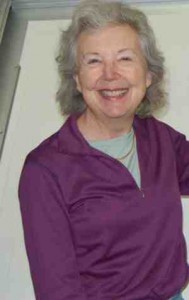Review by Ed Quillen
Local History – July 2007 – Colorado Central Magazine
Beyond the Gorge – A History of Western Frémont County, Colorado
by Carol McNew
Published by the author
Available from Carol McNew, P.O. Box 54, Coaldale CO 81222
No ISBN
WESTERN FRÉMONT COUNTY stretches along the Arkansas River from Parkdale, the west portal of the Royal Gorge, almost to Salida. According to the state constitution, Chaffee County starts at a point three miles downstream from the mouth of the South Arkansas River, which is about 1½ miles downriver from Salida’s F Street Bridge. To the south, Frémont abuts Custer County (which was carved out of Frémont in 1877) at Hillside, and to the north, there’s Park County.
There are a few settlements, like Texas Creek, Howard, Coaldale, and Cotopaxi, but there’s no real commercial center, and the region remains rural and relatively unpopulated. It’s rugged land, punctuated by a few undulating valleys. This area doesn’t get much attention from historians, which inspired Carol McNew, grand-daughter of homesteaders at the long-gone farming town of Nesterville, to compile Beyond the Gorge.
This is a short book, 46 pages, with a comb binding that works well. Like many home-made local histories, it has many gems of information you won’t find anywhere else. It also has some familiar problems with such works, such as poor organization and occasional dollops of erroneous information.
For a sample of the latter, there’s “The railroad went through Cotopaxi sometime in the winter of 1881.” Since the railroad had reached Salida by the spring of 1880, the rails from Cañon City must have passed through Cotopaxi before 1881.
As for organization, there’s no consistent narrative. Nor is it really organized geographically with a chapter for each settlement. There’s a roadside history at the start, beginning at Parkdale and providing pictures and historical commentary up to Texas Creek and south to Hillside. Then there’s a reprint of a 1935 area history, followed by McNew’s own history of Cotopaxi, and brief articles about spots like Whitehorn and Copperfield.
That said, there’s still plenty to enjoy here. Until the railroad came through, this rugged area was rather inaccessible. Yet it sat near the middle of the state, and by 1877, in the middle of various mining prospects, from Leadville in the north to Silver Cliff in the south and the Gunnison Country to the west.
So Cotopaxi became a wagon-freight hub, amid steep roads that could turn muddy or worse, and most of these pioneer routes remain as back roads to explore today.
There was considerable local industry, too, and McNew goes into some detail about the charcoal cutters (whose beehive-shaped kilns can still be found), the tie hacks (who floated their work down the river to the railroad construction crews), and the timber cutters.
Also there were metal mines, none ever producing any substantial quantity of gold, silver, or copper. The open-pit quarries were more enduring, some active well into the 20th century as they produced limestone and granite. (Indeed, my favorite part of the Lost Mine tour in Western Frémont is the old lime quarry and kiln, rather than the manganese mine.)
And of course, there was cattle ranching, from the earliest days of white settlement to the present, as well as some farming.
If you’re curious about the lore of the rough country between Salida and Cañon City, you’ll find quite a few answers here, from the Wellsville resort and the ghost town of Whitehorn to the charcoal kilns and the roadside rock formations.
This book is a decent start, and with some editing and better organization, the rich history of Western Frémont could get the broader attention it deserves.

